Torenia Plant
Torenia, also known as Wishbone Flower, is an annual plant with colorful, trumpet-shaped flowers. Plant in well-draining soil and provide partial shade to full sun exposure. Keep the soil consistently moist. Deadheading spent flowers encourages continuous blooming.
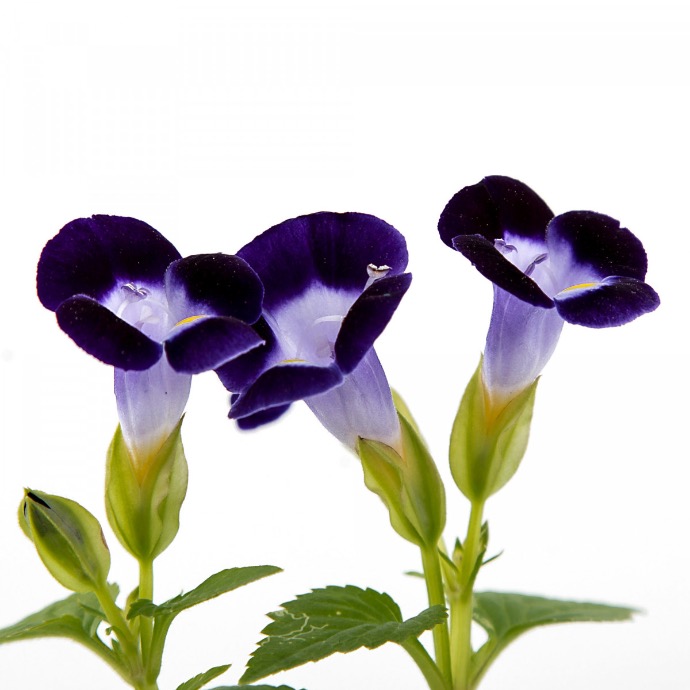
Habit
Annual / perennial
Height
0.3 to 0.5 m
Growth
Moderate
Soil
Well-drained, Loamy
Shade
Partial shade
Moisture
Moist
Edible
No
Medicinal
No
Origin
Southeast Asia
Climatic Condition
Tropical, Subtropical
Temperature (°)
20°C to 30°C
Humidity (%)
60% to 80%
Potting media
50% Loam, 40% Sand, 10% Compost
Fertilizers
Organic Fertilizer
Watering
Regular watering
Plant Weight
0.2 to 0.3 kg
Flowering Time
Spring to Fall
Soil Ph level
6.0 to 7.5
Water Ph level
6.0 to 7.0
Soil EC
0.5 to 0.7 mS/cm
Yield Per Plant
2 to 3 kg per plant
NPK ratio
10:10:10
life Span
2 to 3 years
Health Benefits
Ornamental, Medicinal
Suggested Grow Media or Potting Mix ?
40% peat moss, 30% compost, 30% perlite
Suggested Fertigation/Fertilizers
Fertilize every 2 weeks with a balanced, water-soluble fertilizer.
Common Diseases and Remedies
Powdery mildew .
White to grey powdery growth on leaves and sometimes stems and flowers.
Prune out diseased tissue.
HEALTH BENEFITS
1. May help reduce inflammation: Torenia's antioxidants and other compounds may help reduce inflammation and improve overall health.
2. May have antimicrobial properties: Torenia may have antimicrobial properties that can help prevent infections.
3. May help improve skin health: Torenia's antioxidants and other compounds may also help improve skin health.
What is a torenia plant?
Torenia, commonly known as wishbone flower or bluewing, is a genus of flowering plants in the Lindaniaceae family. These plants are native to tropical and subtropical regions of Asia, Africa, and America. Torenia is characterized by its profusion of trumpet-shaped flowers in various colors such as blue, purple, pink, and white. The flowers often have a distinctive wishbone-like pattern, hence the name.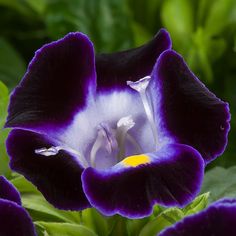
.What types of Torenia plants are there?
There are many different types of Torenia plants, each with unique characteristics and growth requirements. Popular varieties include:
1. Torenia furnieri:
The most common species, known for its colorful flowers and compact habit. Available in a wide variety of colors including blue, purple, pink, and white.
2. Torenia 'Summer Wave':
This variety is known for its pendulous nature, making it ideal for hanging baskets and containers. It produces many flowers during the summer.
3. Torenia 'Catalina':
Another successor variety, 'Catalina' is highly praised for its heat tolerance and long flower life. They come in a variety of colors, including blue, purple, and pink.
4. Torenia 'Kauai':
This variety is known for its large trumpet-shaped flowers and vigorous growth. It comes in several colors such as blue and purple
5. Torenia series ``Moon'':
A series that produces large upward-facing flowers on compact plants. It comes in several colors including blue, purple, and white.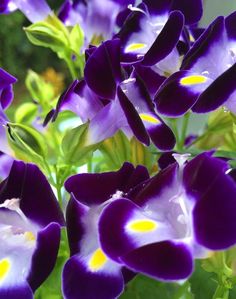
How To Care For Torenia
Location
Torenia plants prefer semi-shaded to fully shaded areas. They thrive in moist, well-drained soils that are rich in organic matter. In hot climates, they benefit from some protection from the intense midday sun. Suitable for growing in garden beds, borders, containers and hanging baskets. Torenia is relatively easy to care for, but it does require regular watering, especially during hot, dry weather.
Sunlight
Torenia plants prefer partial shade to full shade. Although they can tolerate some morning sun, they generally prefer a location with filtered light or some shade, especially in hot climates. Particularly in warmer regions, too much direct afternoon sunlight can cause plants to wilt or become sunburned. Provided with adequate shade, it can grow and produce a large number of colorful flowers.
Soil
Torenia plants prefer moist, well-drained soil rich in organic matter. A high-quality potting or garden soil enriched with compost or peat moss is ideal for Torenia plants. The soil should always be kept moist but not soggy as it does not tolerate drought well. Adding a layer of mulch around your plants will help retain soil moisture and regulate temperature.
Hydration
Torenia plants require regular watering to keep the soil constantly moist, especially in hot, dry weather. However, be careful not to overwater, as root rot may occur if the soil remains wet. A good rule of thumb is to water when the top inch of soil feels dry. In high temperatures or strong winds, you may need to water more frequently to keep the soil moist. Adding a layer of mulch around your plants will help retain moisture and reduce watering frequency.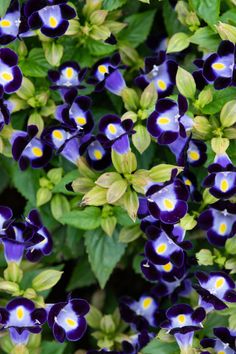
Nourishment
To keep Torenia plants healthy and thriving, it is beneficial to fertilize them regularly. During the growing season, you can use a balanced water-soluble fertilizer every 2 to 4 weeks, such as: B. 10-10-10 formula diluted to half the recommended concentration. Alternatively, you can apply a slow-release fertilizer at the beginning of the growing season according to the manufacturer's instructions. After applying fertilizer, be sure to water the plant to distribute the nutrients evenly throughout the soil.
Issues
Torenia plants are generally easy to care for and relatively resistant to pests and diseases. However, some problems may occur.
1. *Powdery Mildew*: This fungal disease can affect Torenia plants, especially in humid conditions. A white powdery coating appears on the leaves. To prevent mold, ensure good air circulation around the plant and avoid overhead watering. Fungicidal sprays can help control severe infestations.
2. *Aphids*: These small, soft-bodied insects can feed on the sap of Torenia plants and can cause stunted growth and yellowing of the leaves. They can be removed by spraying the plant with a strong stream of water or by using insecticidal soap.
3. *Snails and Snails*: These pests can feed on Torenia plants, especially in damp conditions. Use slug baits and traps to control these pests, and remove hiding places such as weeds and soil near your plants.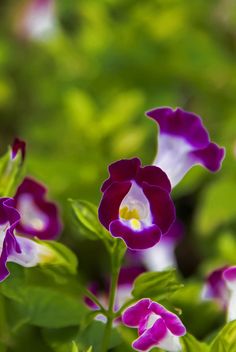
Frequently asked questions about growing Torenia?
How do you care for Torenia plants?
Caring for Torenia plants is relatively simple and easy. Here are some important tips:
1. *Watering*: Keep the soil evenly moist but not soggy. Water the plant when the soil surface feels dry, especially in hot, dry weather.
2. *Fertilization*: Feed Torenia plants regularly with a balanced water-soluble fertilizer diluted to half the recommended concentration every 2 to 4 weeks during the growing season.
3. *Dead branches*: Remove spent flowers regularly to encourage continued flowering and improve the overall appearance of the plant.
4. *Pruning*: Cut off leggy or overgrown stems to encourage bushier growth and improve flowering.
5. *Mulching*: Applying a layer of mulch around plants to retain soil moisture, regulate temperature, and suppress weeds.
6. *Pest and disease management*: Monitor your plants regularly for signs of pests and diseases, such as aphids and mold, and take appropriate steps to manage them.
7. *Support*: Support trailing varieties with stakes or trellises to keep them from growing upright and spreading.
8. *Winter Care*: In cool climates, Torenia plants are usually grown as annuals and do not tolerate frost. In these areas, you can treat it as an annual and replant it every year, or bring it indoors and overwinter before the first frost.
What are Torenia plants used for?
Torenia plants have a variety of practical and aesthetic uses and are a versatile addition to gardens and landscapes.
1. *Ornamental Value*: Torenia plants are grown primarily for their attractive flowers that complement garden beds. Borders, containers and hanging baskets.
2. *Shadow Garden*: Torenia is shade tolerant, making it ideal for planting in areas of the garden that receive little direct sunlight and brighten up shady areas with colorful flowers
3. *Attracts pollinators*: Torenia flowers attract bees, butterflies, and other pollinators, making them a valuable addition to pollination-friendly gardens.
4. *Container Gardening*: Torenia plants are suitable for growing in containers or hanging baskets, adding color to patios, balconies, and other outdoor living spaces.
5. *Ground cover*: Some varieties of Torenia, especially trailing varieties, can be spread out and used as ground covers to fill in bare ground and suppress weeds.
6. *Cut flowers*: Cut Torenia flowers and use them in flower arrangements to bring their beauty indoors.
7. *Deer Resistant*: Torenia plants are often resistant to deer browsing, making them a good choice for gardens where deer are a problem.
Can Torenia be grown indoors?
Yes, Torenia plants can be grown indoors, but they require certain conditions to grow.
1. *Light*: Torenia plants prefer bright indirect light when grown indoors. Place it near a window that gets plenty of light without being exposed to direct sunlight, especially in hot climates.
2. *Temperature*: Torenia plants prefer temperatures between 18 and 24 °C. Do not place it near drafts or air conditioning vents.
3. *Humidity*: Torenia plants prefer high humidity. You can increase humidity by placing a humidifier near the plant or by placing the pot on a tray with pebbles and water (be careful not to place the pot in water).
4. *Watering*: Keep the soil evenly moist but not soggy. Water when the top inch of soil feels dry.
5. *Fertilization*: Feed indoor Torenia plants every 2 to 4 weeks during the growing season with a balanced water-soluble fertilizer diluted to half the recommended concentration.
6. *Pruning*: Regularly remove spent flowers and cut back long buds to promote bushier growth and improve flowering.
7. *Pest and Disease Management*: Monitor indoor Torenia plants for pests and diseases and take appropriate measures to control them.
Which pot is best for growing Torenia plants?
Torenia plants prefer moist but well-drained soil, so when growing Torenia plants, avoid waterlogging. It is best to choose a pot with sufficient drainage. Here are some tips for choosing the right pot:
1. *Size*: Choose a pot that is slightly larger than the plant's current root ball to allow room for growth. Typically, a 6- to 8-inch diameter pot is suitable for a single Torenia plant.
2. *Material*: Terracotta pots are suitable for torenia plants as they are porous and allow good air circulation to the roots. However, any pot with drainage holes will work.
3. *Depth*: Torenia plants have shallow root systems, so a pot 6 to 8 inches deep is sufficient.
4. *Weight*: Consider the weight of the pot, especially if you plan on moving it often. In this case, lightweight materials such as plastics and resins are more practical.
5. *Aesthetic*: Choose a pot that matches the look of your indoor or outdoor space and the color of your torenia flowers.
Where can I buy Torenia plants?
Torenia plants can be purchased at local nurseries, garden centers, and plant stores. It is also available at some hardware stores and online plant retailers. Here are a few options:
1. *Local nursery or garden center*: Visit your local nursery or garden center to see if Torenia plants are available. Available in a variety of colors and sizes.
2. *Hardware stores*: Some hardware stores, such as Home Depot and Lowe's, carry plants such as Torenia. Please check the availability of garden areas.
3. *Online Plant Dealers*: Many online plant dealers sell Torenia plants. Sites like Etsy, Amazon, and The Sill may have a variety of options to choose from.
4. *Plant Shows and Farmers Markets*: Search for plant shows, farmers markets, or plant sales in your area that may have Torenia plants for sale.
5. *Local Plant Exchange*: See if there are local plant exchanges or gardening groups where you can trade or purchase Torenia plants from other gardeners.
